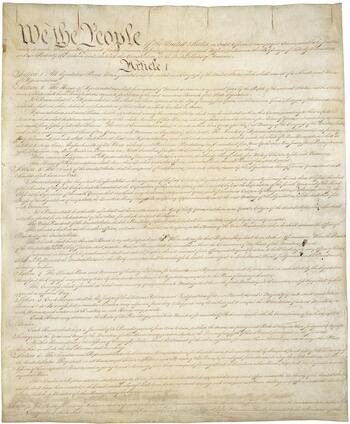Article 1, Section 2 of the United States Constitution originally appeared in 1787 as:
Representatives and direct taxes shall be apportioned among the several States which may be included within this Union according to their respective numbers, which shall be determined by adding to the whole number of free persons, including those bound to service for a term of years, and excluding Indians not taxed, three fifths of all other persons. The actual enumeration shall be made within three years after the first meeting of the Congress of the United States, and within every subsequent term of ten years, in such manner as they shall by law direct.
The U.S. Constitution simply and clearly mandates a population count in the country every ten years, beginning in 1790. A 1900 report on the History of the U.S. Census, from the Commissioner of Labor, prepared at the request of the U.S. Senate, indicates the requirement for a decennial enumeration arose solely from the “political necessities” of government as indicated in the law, with no thought of providing any other systematic statistical data. The report also points out that the word “census” is not even included in the provision, so that it could not even be truly called a census in the “modern sense of the term.” What was noted is that these words in the Constitution did in fact, make the United States the first country ever in history to legally require a “regular periodical enumeration of its inhabitants.”
Then, as today, U.S. Census population statistics can be valuable benchmarks for assessing the “representativeness” in and by government of all people. For example, although enslaved Africans were not represented at all in government, they were counted – albeit only as three fifths of a person until after the end of the Civil War. And, even though the last Census (2010) indicated 50.8% of the U.S. population is female, we know this is not reflected in our representative bodies of the Senate (23 of 100 or 23% are women) and House of Representatives (102 of 435 or 23.4% are women). In looking to the future, will simple gender identifications of “male” and “female” be adequate descriptors of our population? Like the U.S. Constitution, our understanding and application of the U.S. Census changes and evolves with the people it is intended to represent and provide for.
United States Constitution, Article 1, Section 1 which outlines the requirement of a census, 1787. Source: National Archives Founding Documents Online Catalog.
Census Badge, 1900. Source: Smithsonian National Museum of American History.
